1. What is Spring Boot?
Spring Boot is a sub-project under the Spring open source organization. It is a one-stop solution for Spring components. It mainly simplifies the difficulty of using
Spring, saves heavy configuration, and provides various startups. tool so that developers can get started quickly.
2. Why use SpringBoot
Fast development, rapid integration, simplified configuration, and embedded service container
3. The difference between SpringBoot and SpringCloud
SpringBoot It is a rapidly developed Spring framework. SpringCloud is a complete microservice framework. SpringCloud depends on SpringBoot.
4. What are the advantages of Spring Boot?
Spring Boot mainly has the following advantages: It is easy to get started, improves development efficiency, and provides a faster and simpler development framework for Spring development. Works right out of the box, away from cumbersome configuration. It provides a series of non-business functions common to large-scale projects, such as embedded servers, security management, operating data monitoring, health check and external configuration, etc. The summary of SpringBoot is to make coding simpler, configuration simpler, deployment simpler, monitoring simpler, etc.
5. What is the core annotation of Spring Boot?
What annotations does it mainly consist of? The annotation on the startup class is @SpringBootApplication, which is also the core annotation of Spring Boot. The main combination includes the following three annotations: @SpringBootConfiguration: combines the @Configuration annotation to implement the function of the configuration file. @EnableAutoConfiguration: Turn on the automatic configuration function, or turn off an automatic configuration option. For example:
java If you turn off the data source automatic configuration function: @SpringBootApplication(exclude = { DataSourceAutoConfiguration.class }).
@ComponentScan: Spring component scan. 6. What logging frameworks does Spring Boot support? What is the recommended and default logging framework?
Spring Boot supports Java Util Logging, Log4j2, and Lockback as logging frameworks. If you use Starters to launch
, Spring Boot will use Logback as the default logging framework, but it supports no matter what kind of logging framework it is. Output the configuration file to the console or file.
7. The working principle of SpringBoot Starter
I personally understand that SpringBoot is composed of various Starters. We can also develop the Starter ourselves. The @SpringBootApplication annotation will automatically go to maven when springBoot starts. Read the
spring.factories file in each starter, which configures all the beans that need to be created in the spring container, and performs automatic configuration to inject thebean into the SpringContext // (SpringContext is Spring's Configuration file)
8. What are the new features of Spring Boot 2.X? How is it different from 1.X?
Configuration change JDK version upgrade Third-party class library upgrade Responsive Spring programming supports HTTP/2 Supports configuration attribute binding More improvements and enhancements
9. What front-end templates does SpringBoot support
thymeleaf, freemarker, jsp, JSP is not officially recommended and will have restrictions
10. Disadvantages of SpringBoot
I think it is embarrassing. At present, I think SpringBoot has no shortcomings. When I found one, I thought it was because I didn’t have to configure it myself, so it was difficult to locate when an error was reported.
11. What are the ways to run Spring Boot?
Package with commands or put it in a container to run
Use Maven/Gradle plug-in to runDirectly execute the main method to run
12. Does Spring Boot need to be run in an independent container?
No need, there are built-in containers such as Tomcat/Jetty.
13. What are the ways to enable Spring Boot features?
Inherit the spring-boot-starter-parent project
Import the spring-boot-dependencies project dependencies
14. What are the ways to implement hot deployment in SpringBoot?
Hot deployment means that the operation background code can be automatically updated to the running project without re-running the SpringBoot project.
There are two main ways:Spring Loaded
Spring-boot-devtools
15. The use of SpringBoot things
SpringBoot things are very simple. First use the annotation EnableTransactionManagement to open the thing, and then add the annotation Transactional to the
Service method.
16. Async asynchronous calling method
Using asynchronous calling in SpringBoot is very simple. You only need to use the @Async annotation on the method to achieve asynchronous
calling of the method. Note: You need to add @EnableAsync to the startup class to make the asynchronous call @Async annotation take effect.
17. How to run some specific code when Spring Boot starts?
You can implement the interface ApplicationRunner or CommandLineRunner. These two interfaces are implemented in the same way. They
only provide one run method
18. What are the several ways to read configuration in Spring Boot? Way?
Spring Boot can bind variables through @PropertySource, @Value, @Environment, @ConfigurationPropertie annotation
19. What is JavaConfig?
Spring JavaConfig is a product of the Spring community. It was introduced in Spring 3.0. It provides a
pure Java method for configuring the Spring IOC container. So it helps avoid using XML configuration. The advantages of using JavaConfig are:
Object-oriented configuration. Because configurations are defined as classes in JavaConfig, users can take full advantage of object-oriented features in Java. One configuration class can inherit another, override its @Bean methods, etc.
Reduce or eliminate XML configuration. The benefits of externalized configuration based on dependency injection principles have been proven. However, many developers don't want to switch back and forth between XML and Java. JavaConfig provides developers with a pure Java way to configure Spring containers similar to XML configuration concepts. From a technical perspective, it is possible to configure a container using only the JavaConfig configuration class, but in practice many people believe that mixing and matching JavaConfig with XML is ideal.
Type safe and refactoring friendly. JavaConfig provides a type-safe way to configure Spring containers. Thanks to Java
5.0's support for generics, it is now possible to retrieve beans by type instead of by name, without requiring any casts or string-based lookups.
Commonly used Java config:
@Configuration: Write this annotation on the class to indicate that this class is a configuration class
@ComponentScan: Add the @ComponentScan annotation on the configuration class. By default, this annotation will scan all configuration classes under the package where this class is located, which is equivalent to the previous
@Bean: bean injection: equivalent to the previous class="org.codehaus.jackson.map.ObjectMapper" />
@EnableWebMvc: equivalent to xml
@ImportResource: Equivalent to xml
Mainly the core annotation on Spring Boot's startup class, the SpringBootApplication annotation main configuration class. With this main configuration
, an @EnableAutoConfiguration annotation automatic configuration function will be enabled for Spring Boot when the class starts.
With this EnableAutoConfiguration, it will:
Load the auto-configuration classes that may be used from the configuration file META_INF/Spring.factories
Remove duplication, and exclude the classes carried by the exclude and excludeName attributes
Filter , return the automatic configuration classes that meet the condition (@Conditional)
1.properties file;
2.YAML file;
3.System environment variables;
4.Command line parameters;
etc.……
add complex properties in a configuration file. It can be seen that YAML has hierarchical configuration data.
23. What are the advantages of YAML configuration?
YAML can now be regarded as a very popular configuration file format. Whether it is front-end or back-end, you can see YAML configuration
set. So what are the advantages of YAML configuration compared with traditional properties configuration? Orderly configuration, in some special scenarios, orderly configuration is critical
Concise and clear, it also supports arrays, the elements in the array can be basic data types or objects
Compared with properties configuration File, YAML has another disadvantage, that is, it does not support the @PropertySource annotation to import
customized YAML configuration.
24. Can Spring Boot use XML configuration?
Spring Boot recommends using Java configuration instead of XML configuration, but XML configuration can also be used in Spring Boot through @ImportResource Annotations can introduce an XML configuration.
25. What is the core configuration file of spring boot? What is the difference between bootstrap.properties and application.properties?
Spring boot core two configuration files:
bootstrap (. yml or . properties): boostrap is loaded by the parent ApplicationContext and is loaded before application. The configuration takes effect in the boot phase of the application context. Generally speaking, we will use this file in Spring Cloud configuration. And the properties in boostrap cannot be overridden;application (. yml or . properties): loaded by ApplicationContext, used for automated configuration of the spring boot project
.
26. What are Spring Profiles?
During project development, some configuration files may be different in different environments such as development, testing or production, such as database connection
, redis configuration, etc. So how do we automatically switch configurations in different environments? Spring provides us with the
profiles mechanism that provides us with the function of switching configuration files back and forth.
Spring Profiles allows users to register beans based on configuration files (dev, test, prod, etc.). So when the application
is run in development, only certain beans can be loaded, while in PRODUCTION, certain other beans can be loaded.
Assume our requirement is that Swagger documentation is only available in the QA environment and all other documentation is disabled. This can be done using configuration files. Spring Boot makes working with configuration files very easy.
to read the properties in the properties Configuration, use @MapperScan to register into the corresponding mapper package
Transactions configured in DataSourceConfig
The second is to use jta-atomikos to implement distributed transaction management
Check your dependencies with Snyk
Upgrade to the latest version
Enable CSRF protection
Use Content Security Policy to prevent XSS attacks
security configuration must be added. It requires very little code. Configuration classes will have to extend WebSecurityConfigurerAdapter and override its methods.
31. Compare the advantages and disadvantages of Spring Security and Shiro?
Since Spring Boot officially provides a large number of very convenient starters out of the box, including Spring Security's
Starter makes it easier to use Spring Security in Spring Boot. You only need to add a dependency to protect all interfaces. Therefore, if it is a Spring Boot project, Spring Security is generally selected. Of course, this is just a suggested combination. From a purely technical point of view, no matter how you combine it, there will be no problem. Compared with Spring Security, Shiro mainly has the following characteristics:
Spring Security is a heavyweight security management framework; Shiro is a lightweight security management framework
Spring Security has complex concepts and configuration Cumbersome; Shiro has simple concepts and simple configuration
Spring Security has powerful functions; Shiro has simple functions
32. How to solve cross-domain problems in Spring Boot?
Cross-domain can be done through JSONP on the front end Solved, but JSONP can only send GET requests and cannot send other types of requests. In RESTful-style applications, it is very useless. Therefore, we recommend using (CORS, Crossorigin resource sharing) on the back end to solve cross-origin requests. domain issues. This solution is not unique to Spring Boot. In the traditional
now we can implement WebMvcConfigurer The interface then overrides the addCorsMappings method to solve cross-domain issues.
@Configuration
public class CorsConfig implements WebMvcConfigurer {
@Override
public void addCorsMappings(CorsRegistry registry) {
registry.addMapping("/**")
.allowedOrigins("*")
.allowCredentials(true)
.allowedMethods("GET", "POST", "PUT", "DELETE", "OPTIONS")
.maxAge(3600);
}
}33. What is a monitor in Spring Boot?
Spring boot actuator is one of the important functions in the spring startup framework. Spring boot monitors help you access the current status of running applications in your production environment. There are several metrics that must be checked and monitored in a production environment. Even some external applications may be using these services to trigger alert messages to relevant people. The monitor module exposes a set of REST endpoints accessible directly
as HTTP URLs to check status.
34. How to use Spring Boot to implement global exception handling?
Spring provides a very useful way to handle exceptions using ControllerAdvice. We handle all exceptions thrown by the controller class by implementing a
ControlerAdvice class.
35. How do we monitor all Spring Boot microservices?
Spring Boot provides monitor endpoints to monitor metrics for individual microservices. These endpoints are useful for getting information
about applications (like whether they are started) and whether their components (like databases, etc.) are running properly. However, one major disadvantage or difficulty of using monitor is that we have to open the application's knowledge point individually to know its status or health. Imagine a microservice involving 50 applications, the administrator would have to hit the execution terminals of all 50 applications. To help
us deal with this situation, we will use the open source project located at . It is built on top of Spring Boot Actuator, which provides a web UI that allows us to visualize the metrics of multiple applications.
36. SpringBoot性能如何优化
如果项目比较大,类比较多,不使用@SpringBootApplication,采用@Compoment指定扫包范
围
在项目启动时设置JVM初始内存和最大内存相同
将springboot内置服务器由tomcat设置为undertow
37. 如何重新加载 Spring Boot 上的更改,而无需重新启动服务器?Spring Boot项目如何热部署?
这可以使用 DEV 工具来实现。通过这种依赖关系,您可以节省任何更改,嵌入式tomcat 将重新启
动。Spring Boot 有一个开发工具(DevTools)模块,它有助于提高开发人员的生产力。Java 开
发人员面临的一个主要挑战是将文件更改自动部署到服务器并自动重启服务器。开发人员可以重新
加载 Spring Boot 上的更改,而无需重新启动服务器。这将消除每次手动部署更改的需要。Spring
Boot 在发布它的第一个版本时没有这个功能。这是开发人员最需要的功能。DevTools 模块完全满
足开发人员的需求。该模块将在生产环境中被禁用。它还提供 H2 数据库控制台以更好地测试应用
程序。
<dependency> <groupId>org.springframework.boot</groupId> <artifactId>spring-boot-devtools</artifactId> </dependency>
38. SpringBoot微服务中如何实现 session 共享 ?
在微服务中,一个完整的项目被拆分成多个不相同的独立的服务,各个服务独立部署在不同的服务
器上,各自的 session 被从物理空间上隔离开了,但是经常,我们需要在不同微服务之间共享
session ,常见的方案就是 Spring Session + Redis 来实现 session 共享。将所有微服务的
session 统一保存在 Redis 上,当各个微服务对 session 有相关的读写操作时,都去操作 Redis 上
的 session 。这样就实现了 session 共享,Spring Session 基于 Spring 中的代理过滤器实现,使
得 session 的同步操作对开发人员而言是透明的,非常简便。
39. 您使用了哪些 starter maven 依赖项?
使用了下面的一些依赖项
spring-boot-starter-web 嵌入tomcat和web开发需要servlet与jsp支持
spring-boot-starter-data-jpa 数据库支持
spring-boot-starter-data-redis redis数据库支持
spring-boot-starter-data-solr solr支持
mybatis-spring-boot-starter 第三方的mybatis集成starter
自定义的starter(如果自己开发过就可以说出来)
40. Spring Boot 中的 starter 到底是什么 ?
首先,这个 Starter 并非什么新的技术点,基本上还是基于 Spring 已有功能来实现的。首先它提
供了一个自动化配置类,一般命名为 XXXAutoConfiguration ,在这个配置类中通过条件注解来
决定一个配置是否生效(条件注解就是 Spring 中原本就有的),然后它还会提供一系列的默认配
置,也允许开发者根据实际情况自定义相关配置,然后通过类型安全的属性(spring.factories)注入
将这些配置属性注入进来,新注入的属性会代替掉默认属性。正因为如此,很多第三方框架,我们
只需要引入依赖就可以直接使用了。当然,开发者也可以自定义 Starter
41. Spring Boot 中如何实现定时任务 ?
在 Spring Boot 中使用定时任务主要有两种不同的方式,一个就是使用 Spring 中的 @Scheduled
注解,另一-个则是使用第三方框架 Quartz。
使用 Spring 中的 @Scheduled 的方式主要通过 @Scheduled 注解来实现。
42. spring-boot-starter-parent 有什么用 ?
我们都知道,新创建一个 Spring Boot 项目,默认都是有 parent 的,这个 parent 就是 springboot-starter-parent ,spring-boot-starter-parent 主要有如下作用:
定义了 Java 编译版本为 1.8 。
使用 UTF-8 格式编码。
继承自 spring-boot-dependencies,这个里边定义了依赖的版本,也正是因为继承了这个依
赖,所以我们在写依赖时才不需要写版本号。
执行打包操作的配置。
自动化的资源过滤。
自动化的插件配置。
针对 application.properties 和 application.yml 的资源过滤,包括通过 profile 定义的不同
环境的配置文件,例如 application-dev.properties 和 application-dev.yml。
总结就是打包用的
43. SpringBoot如何实现打包
进入项目目录在控制台输入mvn clean package,clean是清空已存在的项目包,package进行打
包或者点击左边选项栏中的Mavne,先点击clean在点击package
44. What is the difference between the jar produced by Spring Boot and the ordinary jar?
The jar finally packaged by the Spring Boot project is an executable jar. This kind of jar can be directly passed through java -jar xxx.jar Run the
command. This kind of jar cannot be relied on by other projects as an ordinary jar. Even if it is dependent, the classes in it cannot be used.
Spring Boot’s jar cannot be relied upon by other projects, mainly because its structure is different from that of ordinary jars. For ordinary jar packages, after decompression
is directly the package name, and the package is our code. After decompression, the executable jar packaged by Spring Boot is our code in the \BOOTINF\classes directory, so it cannot be Direct quote. If you must reference it, you can add configuration in the pom.xml file and package the Spring Boot project into two jars, one executable and one referenceable.
The above is the detailed content of What are the interview questions and answers for SpringBoot?. For more information, please follow other related articles on the PHP Chinese website!
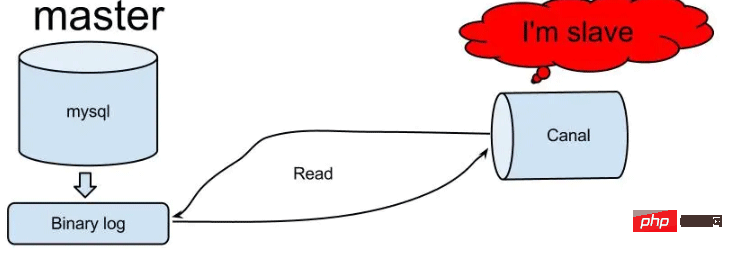 怎么使用SpringBoot+Canal实现数据库实时监控May 10, 2023 pm 06:25 PM
怎么使用SpringBoot+Canal实现数据库实时监控May 10, 2023 pm 06:25 PMCanal工作原理Canal模拟MySQLslave的交互协议,伪装自己为MySQLslave,向MySQLmaster发送dump协议MySQLmaster收到dump请求,开始推送binarylog给slave(也就是Canal)Canal解析binarylog对象(原始为byte流)MySQL打开binlog模式在MySQL配置文件my.cnf设置如下信息:[mysqld]#打开binloglog-bin=mysql-bin#选择ROW(行)模式binlog-format=ROW#配置My
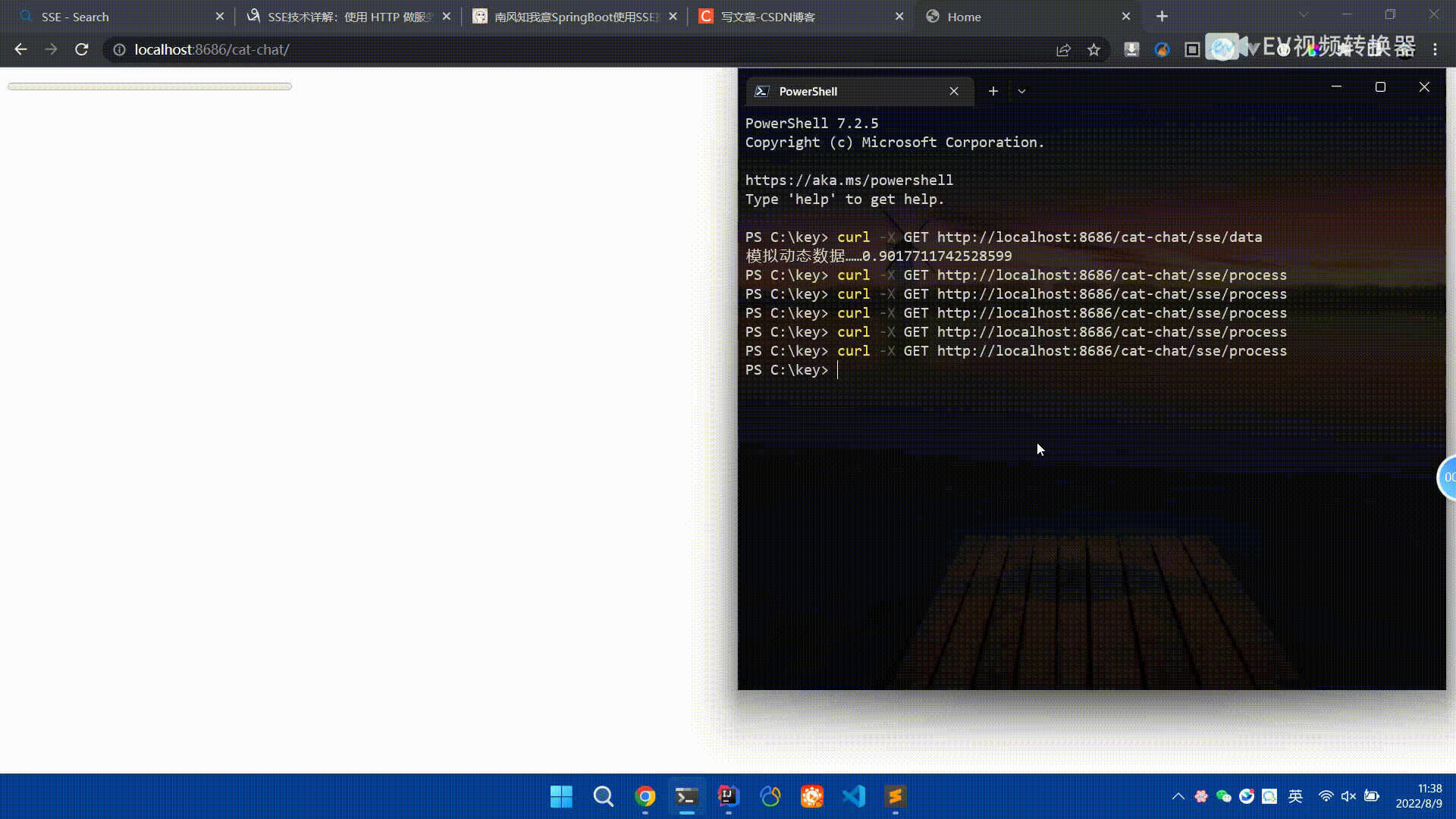 Spring Boot怎么使用SSE方式向前端推送数据May 10, 2023 pm 05:31 PM
Spring Boot怎么使用SSE方式向前端推送数据May 10, 2023 pm 05:31 PM前言SSE简单的来说就是服务器主动向前端推送数据的一种技术,它是单向的,也就是说前端是不能向服务器发送数据的。SSE适用于消息推送,监控等只需要服务器推送数据的场景中,下面是使用SpringBoot来实现一个简单的模拟向前端推动进度数据,前端页面接受后展示进度条。服务端在SpringBoot中使用时需要注意,最好使用SpringWeb提供的SseEmitter这个类来进行操作,我在刚开始时使用网上说的将Content-Type设置为text-stream这种方式发现每次前端每次都会重新创建接。最
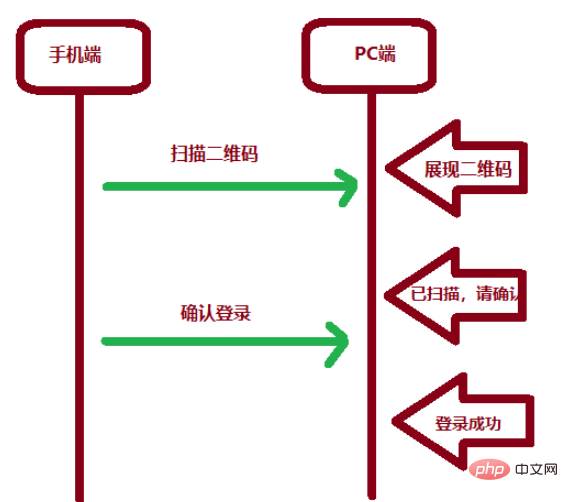 SpringBoot怎么实现二维码扫码登录May 10, 2023 pm 08:25 PM
SpringBoot怎么实现二维码扫码登录May 10, 2023 pm 08:25 PM一、手机扫二维码登录的原理二维码扫码登录是一种基于OAuth3.0协议的授权登录方式。在这种方式下,应用程序不需要获取用户的用户名和密码,只需要获取用户的授权即可。二维码扫码登录主要有以下几个步骤:应用程序生成一个二维码,并将该二维码展示给用户。用户使用扫码工具扫描该二维码,并在授权页面中授权。用户授权后,应用程序会获取一个授权码。应用程序使用该授权码向授权服务器请求访问令牌。授权服务器返回一个访问令牌给应用程序。应用程序使用该访问令牌访问资源服务器。通过以上步骤,二维码扫码登录可以实现用户的快
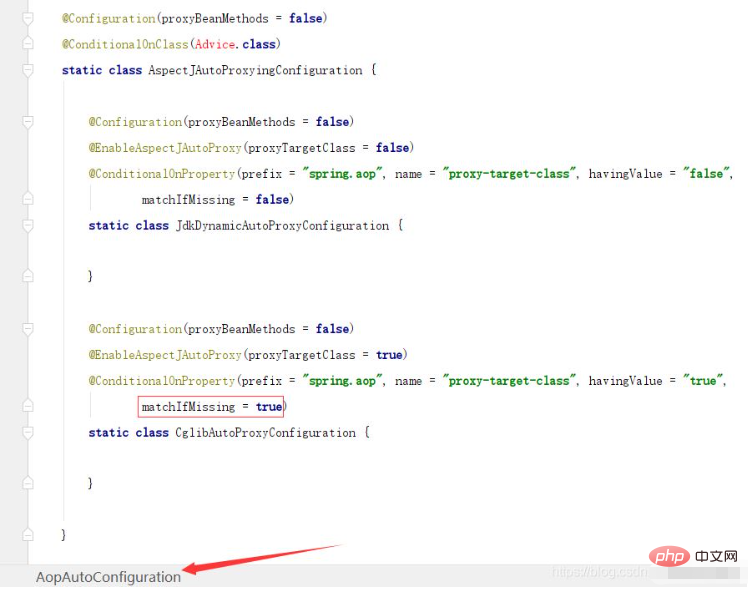 SpringBoot/Spring AOP默认动态代理方式是什么May 10, 2023 pm 03:52 PM
SpringBoot/Spring AOP默认动态代理方式是什么May 10, 2023 pm 03:52 PM1.springboot2.x及以上版本在SpringBoot2.xAOP中会默认使用Cglib来实现,但是Spring5中默认还是使用jdk动态代理。SpringAOP默认使用JDK动态代理,如果对象没有实现接口,则使用CGLIB代理。当然,也可以强制使用CGLIB代理。在SpringBoot中,通过AopAutoConfiguration来自动装配AOP.2.Springboot1.xSpringboot1.xAOP默认还是使用JDK动态代理的3.SpringBoot2.x为何默认使用Cgl
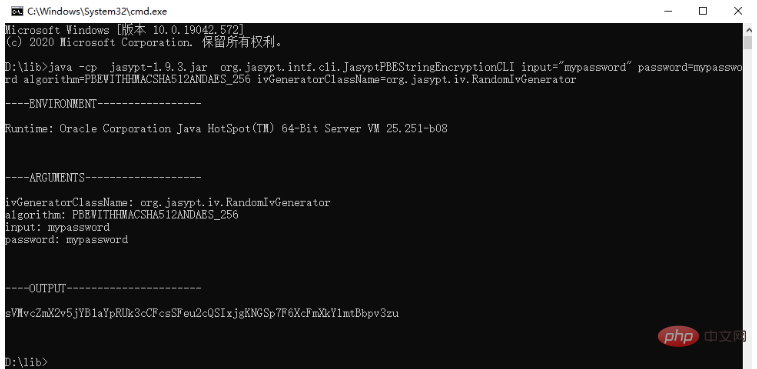 spring boot怎么对敏感信息进行加解密May 10, 2023 pm 02:46 PM
spring boot怎么对敏感信息进行加解密May 10, 2023 pm 02:46 PM我们使用jasypt最新版本对敏感信息进行加解密。1.在项目pom文件中加入如下依赖:com.github.ulisesbocchiojasypt-spring-boot-starter3.0.32.创建加解密公用类:packagecom.myproject.common.utils;importorg.jasypt.encryption.pbe.PooledPBEStringEncryptor;importorg.jasypt.encryption.pbe.config.SimpleStrin
 使用Java SpringBoot集成POI实现Word文档导出Apr 21, 2023 pm 12:19 PM
使用Java SpringBoot集成POI实现Word文档导出Apr 21, 2023 pm 12:19 PM知识准备需要理解ApachePOI遵循的标准(OfficeOpenXML(OOXML)标准和微软的OLE2复合文档格式(OLE2)),这将对应着API的依赖包。什么是POIApachePOI是用Java编写的免费开源的跨平台的JavaAPI,ApachePOI提供API给Java程序对MicrosoftOffice格式档案读和写的功能。POI为“PoorObfuscationImplementation”的首字母缩写,意为“简洁版的模糊实现”。ApachePOI是创建和维护操作各种符合Offic
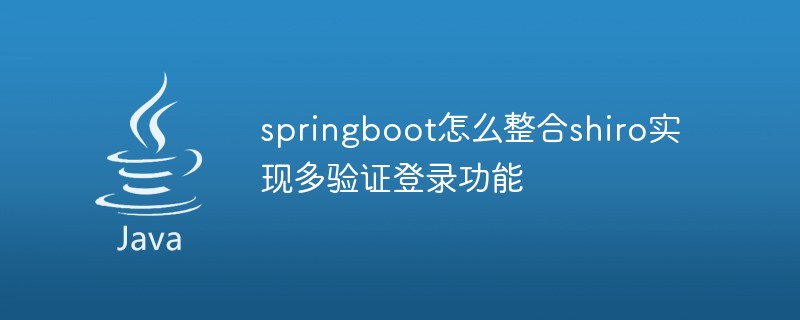 springboot怎么整合shiro实现多验证登录功能May 10, 2023 pm 04:19 PM
springboot怎么整合shiro实现多验证登录功能May 10, 2023 pm 04:19 PM1.首先新建一个shiroConfigshiro的配置类,代码如下:@ConfigurationpublicclassSpringShiroConfig{/***@paramrealms这儿使用接口集合是为了实现多验证登录时使用的*@return*/@BeanpublicSecurityManagersecurityManager(Collectionrealms){DefaultWebSecurityManagersManager=newDefaultWebSecurityManager();
 SpringBoot项目打包发布到外部tomcat遇到的问题怎么解决May 10, 2023 pm 05:49 PM
SpringBoot项目打包发布到外部tomcat遇到的问题怎么解决May 10, 2023 pm 05:49 PM先说遇到问题的情景:初次尝试使用springboot框架写了个小web项目,在IntellijIDEA中能正常启动运行。使用maven运行install,生成war包,发布到本机的tomcat下,出现异常,主要的异常信息是.......LifeCycleException。经各种搜索,找到答案。springboot因为内嵌tomcat容器,所以可以通过打包为jar包的方法将项目发布,但是如何将springboot项目打包成可发布到tomcat中的war包项目呢?1.既然需要打包成war包项目,首


Hot AI Tools

Undresser.AI Undress
AI-powered app for creating realistic nude photos

AI Clothes Remover
Online AI tool for removing clothes from photos.

Undress AI Tool
Undress images for free

Clothoff.io
AI clothes remover

AI Hentai Generator
Generate AI Hentai for free.

Hot Article

Hot Tools

SublimeText3 English version
Recommended: Win version, supports code prompts!

VSCode Windows 64-bit Download
A free and powerful IDE editor launched by Microsoft

MantisBT
Mantis is an easy-to-deploy web-based defect tracking tool designed to aid in product defect tracking. It requires PHP, MySQL and a web server. Check out our demo and hosting services.

WebStorm Mac version
Useful JavaScript development tools

EditPlus Chinese cracked version
Small size, syntax highlighting, does not support code prompt function







